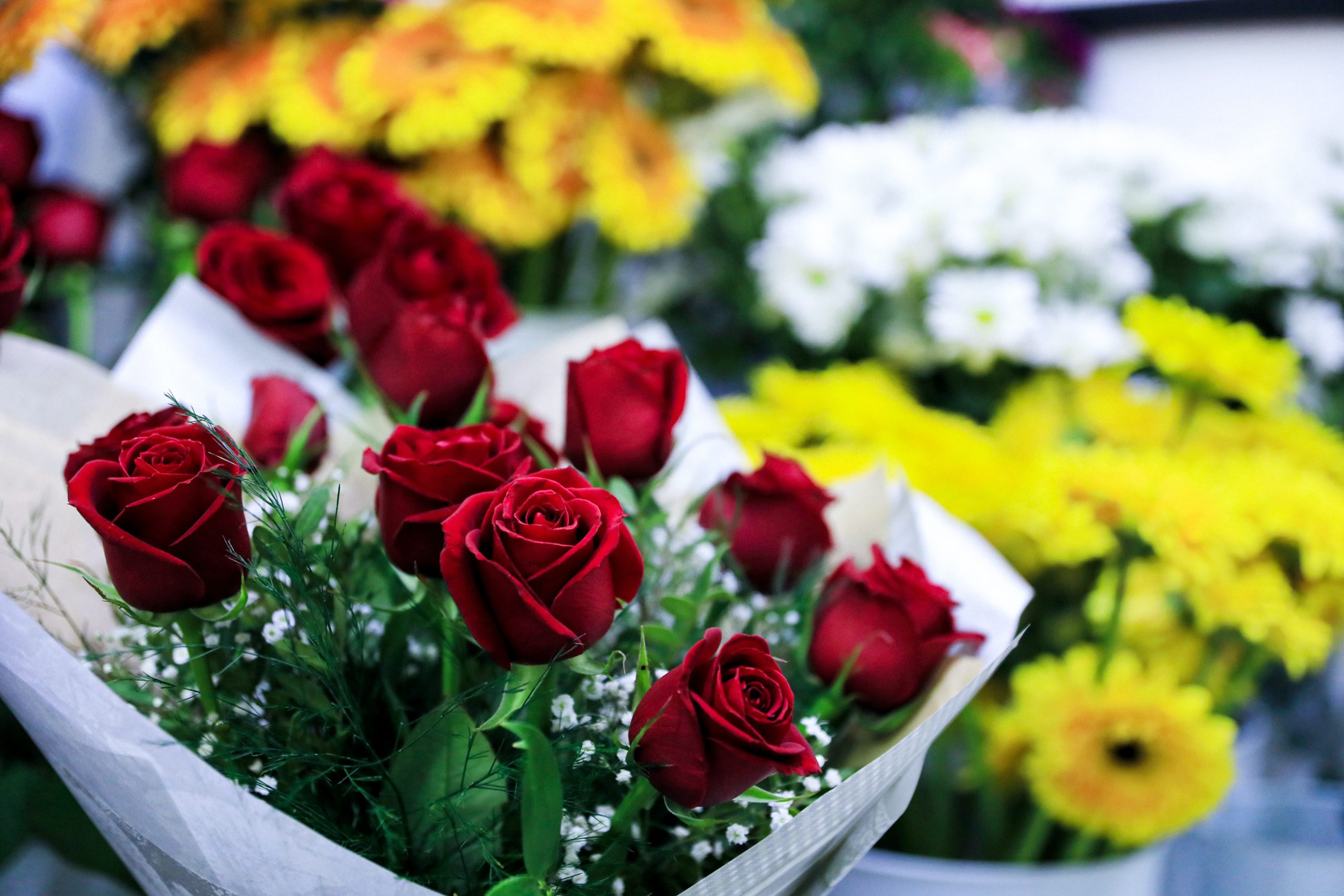Don’t panic, there are still eco-friendly ways to express your love this Valentine’s Day.
Valentine’s Day is a celebration of love across the world, where gift stores and florists go completely red and sell all things heart-shaped, rendering it a seemingly capitalistic construct—to some.
Regardless of the way in which one perceives the holiday — or their relationship status — Valentine’s Day has long been associated with the use of flower bouquets to express one’s love.
However, whilst an endearing gift from mother earth is commonly purchased on 14 February, the cut-flower industry is in actual fact harming the environment.
Inside the industry
The cut-flower industry is bigger than one may think, with a high global demand that increases particularly during holidays, such as Mother’s Day — and of course, Valentine’s Day.
Love is in the air: Qatar Airways delivers 5,000 tonnes of Valentine’s Day flowers
The market value of cut-flowers is expected to reach $49,074 million by 2028. For years, the top exporters of cut flowers have been the Netherlands, Colombia, Ecuador, Kenya and Ethiopia. Whilst in the Middle East and Africa alone, the market value is projected to reach $1,972.69 million by 2027.
During 2020, the EU exported over $10 million worth of cut-flowers and plants to Qatar, with the Netherlands topping the list of exporters at $8.22 million in the same year.
Other countries included Ecuador at $5.87 million, followed by Kenya at $2.35 million, and Ethiopia at $714,000.
With the top flower exporting countries scattered across the globe, the delicate plants are commonly transported to different parts of the world through aeroplanes. According to the International Air Transport Association (IATA), over 80,000 flowers are transported worldwide every 24 hours alone.
The IATA considers flowers as perishable goods, given that they are temperature sensitive items. For this reason, they require rapid delivery to maintain their quality and specific storage requirements.
Last year, Qatar Airways Cargo successfully transported millions of flowers weighing more than 5000 tonnes for Valentine’s Day. The shipments transported flowers from Ecuador to European and Australian Markets.
Countries also included the Netherlands, India, South Africa, Uganda, Thailand, Sri Lanka and Ethiopia.
This year, Kenya authorised Qatar Airways to deploy five additional cargo flights to meet the demand for Valentine’s Day.
With flowers requiring specific temperature controlling systems to keep them fresh, their transportation is negatively impacting the environment.
Studies have found that each flower transported overseas can produce up to 3 kg of CO2, as other estimates suggest that the initial production of 100 million roses produces 9000 metric tonnes of CO2.
Climate change has been driven by CO2 emissions as far as the first half of the 18th century, given that the chemical compound has the capacity of staying in the atmosphere between 300 to 1,000 years.
Beyond aeroplanes, special trucks are required to deliver flowers to ensure the maintenance of their quality. Given their short-life span, the value of cut-flowers drops by almost 15% each day they remain in transit.
As a result of the high maintenance of the flowers and the required preservation process, trucks often have to burn up to 25% more fuel than normal.
However, transportation itself is not to blame as there are other factors contributing to the environmental damage.
‘Code red’: UN climate change report warns of intensifying temperatures in coming decades
Even before most flowers are transported, they are often placed in refrigerated containment systems that emit hydrofluorocarbons (HFC’s). This type of emission can warm the atmosphere at least 9,000 times more than CO2.
At the farm
The process of growing non-fair trade flowers has another set of implications on the environment. As flowers require an abundance of water and chemicals to grow in large amounts in order to meet global demand, the chemicals that are being used may not necessarily bode well with the environment — nor even for the health of humans.
One such example is pesticides. Whilst mixtures of the chemicals are commonly used to protect flowers from insects and fungi, the substances themselves contaminate the pollen. As a result, the pesticide ends up harming bees and humans alike, as approximately 75% of global honey samples have been found to contain the chemicals.
Despite the required process of clearing flowers from chemicals before being exported, farmers on the fields remain affected by the issue as they are more prone to inhaling the pesticides used, and on a daily basis, causing harm to their health.
In one instance, a study on female workers in Ecuador found that pregnant women exposed to the chemicals had a higher chance of giving birth to a child with a neurological impairment.
According to Fair Trade, farms in Kenya use 6.4 times more insecticides and 4.5 times more fungicides than the Netherlands, both of which are types of pesticide, rendering the country the highest user of the potentially harmful chemicals out of all cut-flower exporters.
An advantage, however, that Kenya’s farms have is that the country’s greenhouse emissions are less than those in European flower exporters as it has more sun exposure. Given that greenhouses have to accommodate flower farms all year round, even in cold climates.
As a result, Kenya’s roses produce 5.5 times less greenhouse gas emissions than the Netherlands. Dutch roses emit 2.437 kg of CO2 as Kenyan roses emit 2.408 Kg of CO2.
Water is also causing distress to the environment as the flower industry requires 45% of water, which harms countries where there are scarce water resources. It is estimated that a single rose requires 7-to-13 litres.
Alternatives
Whether or not you found the facts presented on the cut-flower industry convincing enough to stop purchasing the pretty bouquets for your loved ones, a variety of alternatives to the not-so-environmentally-friendly option do exist in stores.
- One simple substitute to mass-produced cut flowers is investing in locally-grown flowers instead. Going local means that the flowers do not travel as much as those that are imported.
- Flowers that are labelled as “Fairtrade” are also a safer option, given that they grew in more environmentally safe conditions whilst protecting their farmers.
- Instead of buying flowers that will eventually wilt, you can purchase local potted plants for your loved one to grow in their backyard or indoors. Qatar is filled with farms that have a colourful variety for plants at nurseries located in every neighbourhood.
Ultimately, expressing your love to another person does not need to be limited to flowers, with a plethora of more creative and sentimental options available across the board. And when all else fails—there is always chocolate.
Follow Doha News on Twitter, Instagram, Facebook and Youtube







